Whether you want to deal with a vaginal prolapse or rectal prolapse in dogs, you might want to explore some home remedies before going to the vet. The cause of it will determine the options, and in most cases, the exclusion of factors causing it will be the best home therapy.
In this article, I will share with you the most effective solutions on how to heal dog prolapse at home, but keep in mind that a professional diagnosis and veterinary care are recommended regardless of the efficacy of the methods shown in this guide.
Home Remedies And Care For Vaginal And Rectal Prolapse In Dogs
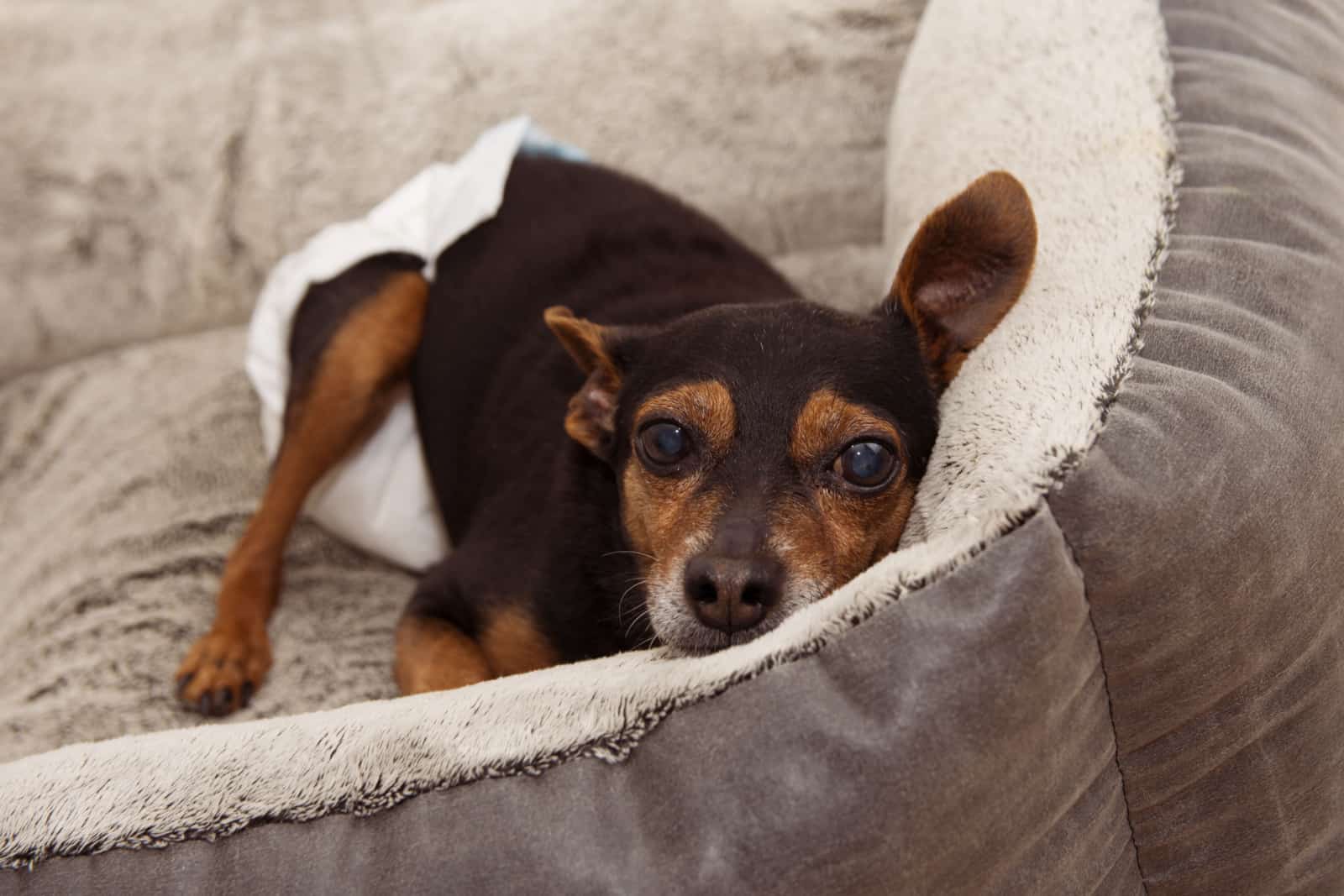
While we, as dog owners, cannot do much in terms of fixing the underlying condition that caused the prolapse in the first place, preventing further damage to the prolapsed tissue of the vagina or anus can help with the symptoms.
In case you are not sure whether your dog has a prolapse or not, here is a short definition and description. Any prolapsed tissue is caused by an abnormal increase in the size of the organ or tissue. Both vaginal and rectal prolapse have varying degrees of severity.
Vaginal Prolapse In Dogs
If it is a vaginal prolapse, then you will most likely see a mass protruding through the vulva of your female dog. There are plenty of cases where only the floor of the vagina (vaginal mucosa) is protruding, but a three-hundred-and-sixty-degree “doughnut-shaped” mass can appear.
Keep in mind that edematous tissue or swelling due to a fluid buildup in the dog’s tissue can look very similar, if not identical, to vaginal prolapse. These two conditions do share some symptoms, but the approach to treating them is different.
There are three types of prolapse that are associated with vaginal hyperplasia:
- Type 1 does not actually cause a prolapse outside of the vulva but protrudes only slightly
- Type 2 has a visible protrusion on the exterior of the vulva
- Type 3 is the donut-looking mass that completely protrudes outside of the vulvar opening
Other symptoms can include excessive licking of the vaginal tissue, reluctance to copulate, and in certain cases, dysuria. Vaginal discharge is sometimes present in the case the prolapse is heat cycle-mediated, making it a rather easy diagnosis for the vet.
The main cause of vaginal hyperplasia is estrogen stimulation during estrus and proestrus, but tissue damage can occur during difficult labor (dystocia), with the strain causing vaginal prolapse.
With the former, after the heat cycle, the prolapse should slowly retract and return to a normal position without requiring surgery or even medication.
Breed genetics are part of the explanation for why brachycephalic dogs like French Bulldogs and Pugs are more prone to it. Other breeds include American Pitbull Terriers, Labrador Retrievers, German Shepherds, Mastiffs, and Springer Spaniels.
Treatment Of Your Dog’s Vaginal Prolapse At Home
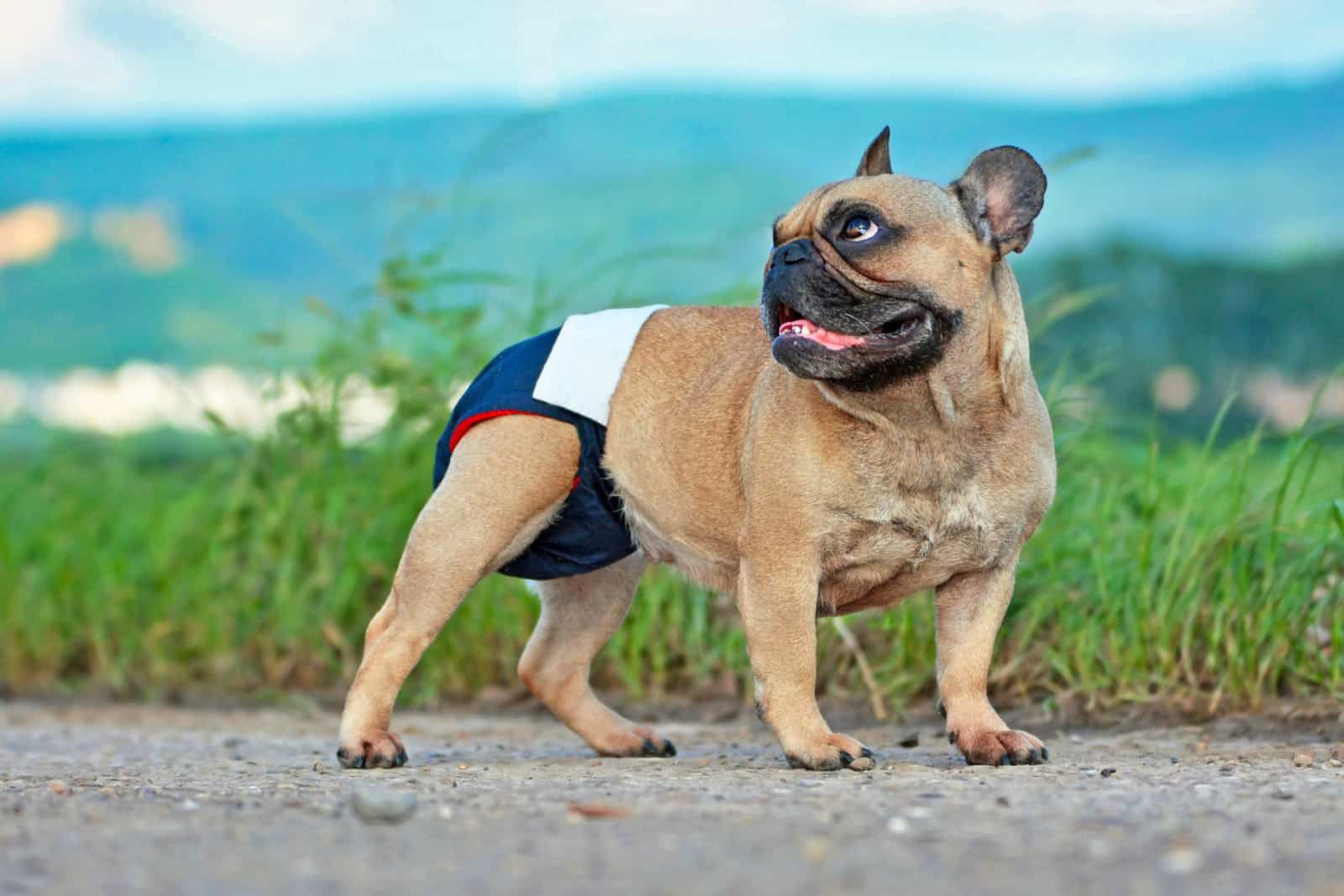
With type 1 vaginal hyperplasia, the symptoms are mild and, in most cases, resolve on their own in a few days or weeks. Preventing damage to the exposed tissue in type 2 and 3 hyperplasias can be done by putting a diaper on your dog or an Elizabethan collar.
The diaper will prevent the protruding mass from touching any rough or dirty surfaces like concrete, soil, sand, etc., while the E-collar will stop the dog from excessively licking or chewing the protruded mass.
Cleaning the area around the protrusion and the prolapsed tissue itself is crucial. With a clean cloth (preferably sterile), gently pat the area with lukewarm water. Ideally, you would want to boil the water first to kill any germs and let it cool to a lukewarm temperature.
Do not put any products in the water as it might cause more irritation and worsen the damage (iodine is acceptable). After cleaning the area, use a dry cloth to remove excess water and apply some antibiotic ointment to prevent the drying of the exposed tissue.
Before applying any topical medication on your dog’s skin, make sure your vet approves it. Testing your dog for allergies should be done as soon as possible to prevent serious reactions to medication.
Avoid having your dog sit on dirty surfaces and in unsanitary conditions. Skip the dog park for a while, as other dogs will be curious about what is happening to your dog. Sniffing around, the other dog will pick up germs that might be transferred to your dog’s prolapsed mucosa.
Even the other dogs in your home should be kept at bay, especially if your female dog is in heat and you have an unneutered male dog in the household. Spaying and neutering your dogs should be a priority from the get-go if you are not a breeder.
If you are worried about a change in behavior after spaying, we have an article dealing with the behavioral changes after spaying.
When To Visit A Vet And Things To Consider
Sometimes, the protrusion will not clear itself up, and urination can become painful for your dog. Straining to urinate or the dog getting urine on the exposed tissue can cause bacterial infections that worsen the condition.
The best thing to do with a type 3 vaginal prolapse is to put a diaper or some soft, clean cloth on the area and go to the veterinarian or animal hospital as soon as possible.
Dysuria is a moderately common complication in vaginal hyperplasia that can be treated with prescription oral antibiotics for outpatient care or intravenous administration if hospitalization is required. The use of a urinary catheter might be necessary.
It will take anywhere from three to five days for symptoms to clear, and increased water consumption is highly encouraged after completing the antibiotic therapy.
Since the pink, bright and sensitive tissue of the mucosa can be mistaken for a tumor, visiting the vet for a possible biopsy can be crucial in preventing the spread of it to other organs. Spaying dogs that will not be bred is a must in preventing cancer of the reproductive system.
The preferred type of spay surgery is an ovariohysterectomy, where the ovaries, uterus, and fallopian tubes are all removed. The chances of ovarian and mammary (breast) cancer or pyometra (uterus inflammation) are drastically reduced with spaying.
Although dystocia is uncommon in dogs, it usually warrants medical emergency intervention. If your dog gave birth at home and experiences a vaginal prolapse as a result of difficult labor, rush it to the animal hospital or vet.
Vaginal prolapse is a recurring condition. Suppose your female dog had dystocia or developed VH during the heat cycle. In that case, it has more than a fifty percent chance of recurring prolapse in the next cycle or litter birth.
Anal Prolapse In Dogs
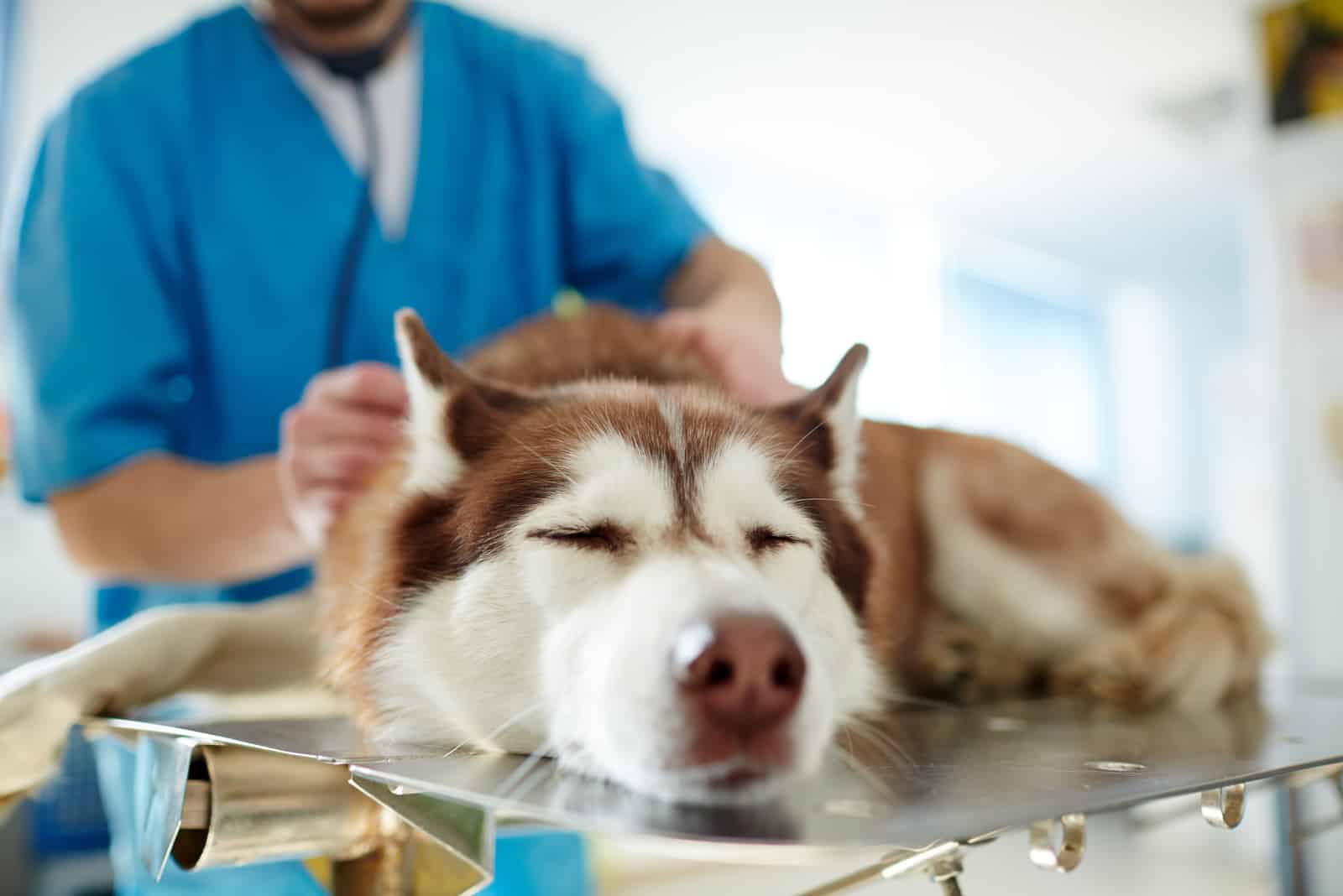
Due to constant straining while defecating or urinating, your dog can develop a protruding mass of rectal tissue from the anus. On occasion, a dog might swallow a foreign body (any object small enough to fit in its mouth) that can cause constipation.
Though these cases are rare, it is still prudent to remove any toys or items that could create a blockage of the intestinal tract from the dog’s environment. Anal prolapse can be caused by parasite infections that cause constant diarrhea or inflammation of the intestinal tract.
As previously mentioned in the vaginal prolapse section, brachycephalic breeds can have upper airway problems that create intra-abdominal pressure, which pushes onto the intestine. Without a biopsy and physical examination, tumors cannot be completely excluded either.
The rectum everts during exertion from trying to poop or pee, causing the rectal tissue to prolapse. A mass shaped like a tube will appear from the dog’s anus during defecation. In partial prolapses, the anal opening protrusion will revert inside after pooping.
With a complete prolapse, the rectum will stay everted, keeping the anal and part of the rectal tissue exposed even when the dog is not straining. If a partial prolapse is not treated, it is highly likely that a progression to complete prolapse will happen.
With time, the protruding tissue will become darker in color (initially, it is bright red and swollen because of the accumulation of fluids). The black or blue mass indicates a cutoff in blood flow to the anal and rectal tissue.
Tissue necrosis ensues if the prolapse is not treated, ultimately leading to complications that can be fatal for the dog.
Home Treatment Of Rectal Prolapse In Your Dog
Treating anal prolapse in a dog at home is not advised. Even when the prolapse is partial, there might be underlying causes that are causing it. Trying to put the exposed tissue back in with your finger can worsen the situation, so erase it from your mind.
Generally, you will want to rush your dog to the animal hospital or vet for a physical examination. To lower the chances of injuring the sensitive rectal tissue, you can gently wash it with a solution of water and iodine or just water.
Keeping the tissue from drying can be achieved by using a ph-neutral cream or ointment to retain skin flexibility without damaging the tissue. Never add products that have a lot of chemicals because they can cause irritation. The same applies to non-ph-neutral grooming products.
If the rectal prolapse is caused by a foreign body, it is imperative you do not touch anything and keep your dog comfortable during the trip to the vet or animal hospital. The object obstructing the intestinal tract can easily pierce the tissue or the intestine, causing bleeding or infection.
Partial prolapses diagnosed by your vet can mean that the treatment will be continued at home, so reduce physical activity and exposure to dirty surfaces like dirt, soil, and abrasive materials such as concrete or sand.
There is no answer on how to heal dog prolapse at home because, in the majority of cases, it will require either prescription medication or surgery.
Medical Procedures Used In Complete And Severe Rectal And Anal Prolapse
Prior to any procedure, a thorough physical examination, palpation test, and an X-ray will be done to check for objects in the intestinal tract or to rule out some underlying cause. Treating the symptom without a diagnosed cause can be dangerous for the dog.
Most often, the procedure involves restoring the prolapsed tissue to its normal position. The veterinarian will put your dog under general anesthesia and use a fifty percent dextrose solution to rub into the protruding mass.
With the reduction in inflammation, the tissue will reduce in size, allowing the vet to gently push the prolapsed anal or rectal tissue back into the anal cavity. Since the muscles keeping the tissue in place become loose, a purse-string suture (anastomosis) will prevent the recurrence of prolapse.
Complete prolapse that results in permanent tissue damage or infection requires a different surgery called resection. More invasive, but sometimes necessary, is a colopexy, which includes tightening the rectal tissue from inside the intestine.
Back home, you will probably have to put an e-collar on your dog and continue the appropriate therapy that your vet prescribed. Oral antiparasitics or antibiotics are the most common outpatient therapy.
In case of intestinal worms, your dog will be treated while still at the vet’s office or animal hospital. Diagnosing this parasitic infection can be difficult, but a full blood panel indicating a raised immune response is usually a sign of infection.
Urethral Prolapse
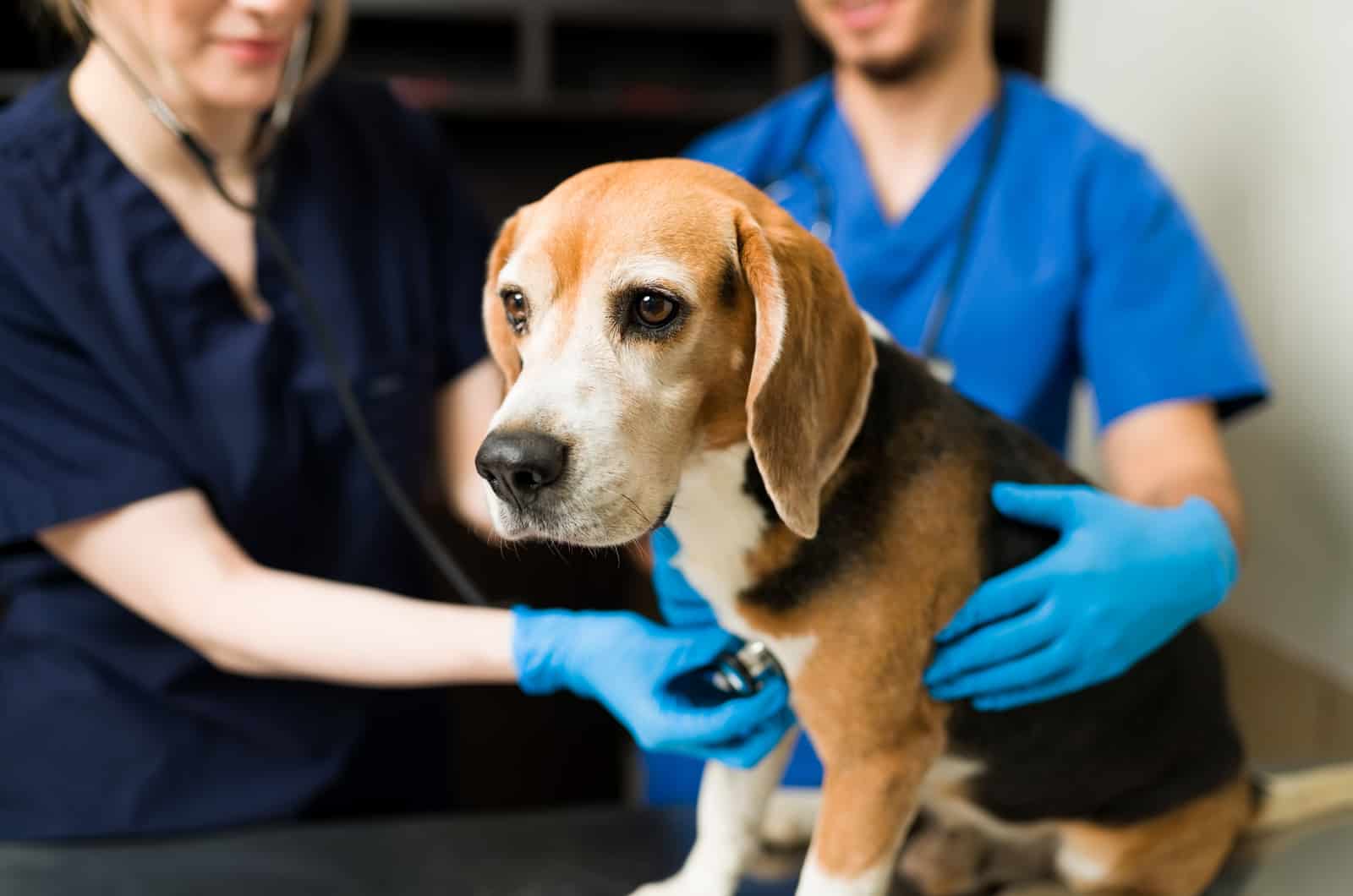
Although not that common, urethral prolapse occurs in male dogs and is a serious condition that requires immediate medical intervention.
The causes are largely unknown, but brachycephalic breeds seem to be in the high-risk group for developing urethral prolapse for the same reason rectal prolapse is caused — intra-abdominal pressure due to upper respiratory system issues.
Other than birth defects (congenital), it can be caused by sexual excitement, dysuria, urinary tract infections (UTIs), and bladder stones (uroliths). The male genitals, the penis, will have a red or purple mass protruding from the urethra that can cause significant pain and problems urinating.
Your dog will lick its penis, and you might notice blood in the urine. More severe cases will have bleeding from the tip of the penis. Urethral prolapse is most often a secondary condition that develops due to one of the previously mentioned conditions (bladder stones, UTIs, etc.).
Additionally, your dog might have difficulties urinating or urinating often but with only drops of urine coming out. There is nothing you can do at home to treat a urethral prolapse, so visit your vet immediately after noticing any of the symptoms.
Treatment Options
If you are wondering how to heal dog prolapse at home, you can stop doing so. Urethral prolapses should only be handled by professionals. Trying different home remedies will often cause more pain and/or damage to the delicate mucosa.
In clear-cut cases, a physical examination will suffice in diagnosing urethral prolapse. However, the vet will probably do an abdominal radiograph and ultrasound, urine culture, and urinalysis to see what caused the protrusion.
Just like with rectal and anal prolapse, resection and anastomosis of the mucosa are an option. After retracting the inner lining of the urethra, the tissue will be retracted, and a purse-string suture will be placed to prevent a recurrence.
The preferred surgery for many veterinary surgeons is urethropexy. This involves the manual extension of the penis to place a grooved director, which will put the protrusion back into the urethra.
Then, sutures will be threaded through the entire thickness of the penis to extend the urethral lumen (circumference) and keep the tissue in place. The surgeon will most likely suggest castration to prevent a repeated occurrence of urethral prolapse, and it is usually done during urethropexy.
Since sexual arousal is connected to many cases of prolapse, most veterinary surgeons will recommend castration.
If the underlying cause is bladder stones, an extraction catheter can be used to remove them. For bigger formations, surgery is necessary. Less severe cases and urinary tract infections can be successfully treated with medication, too.
Conclusion
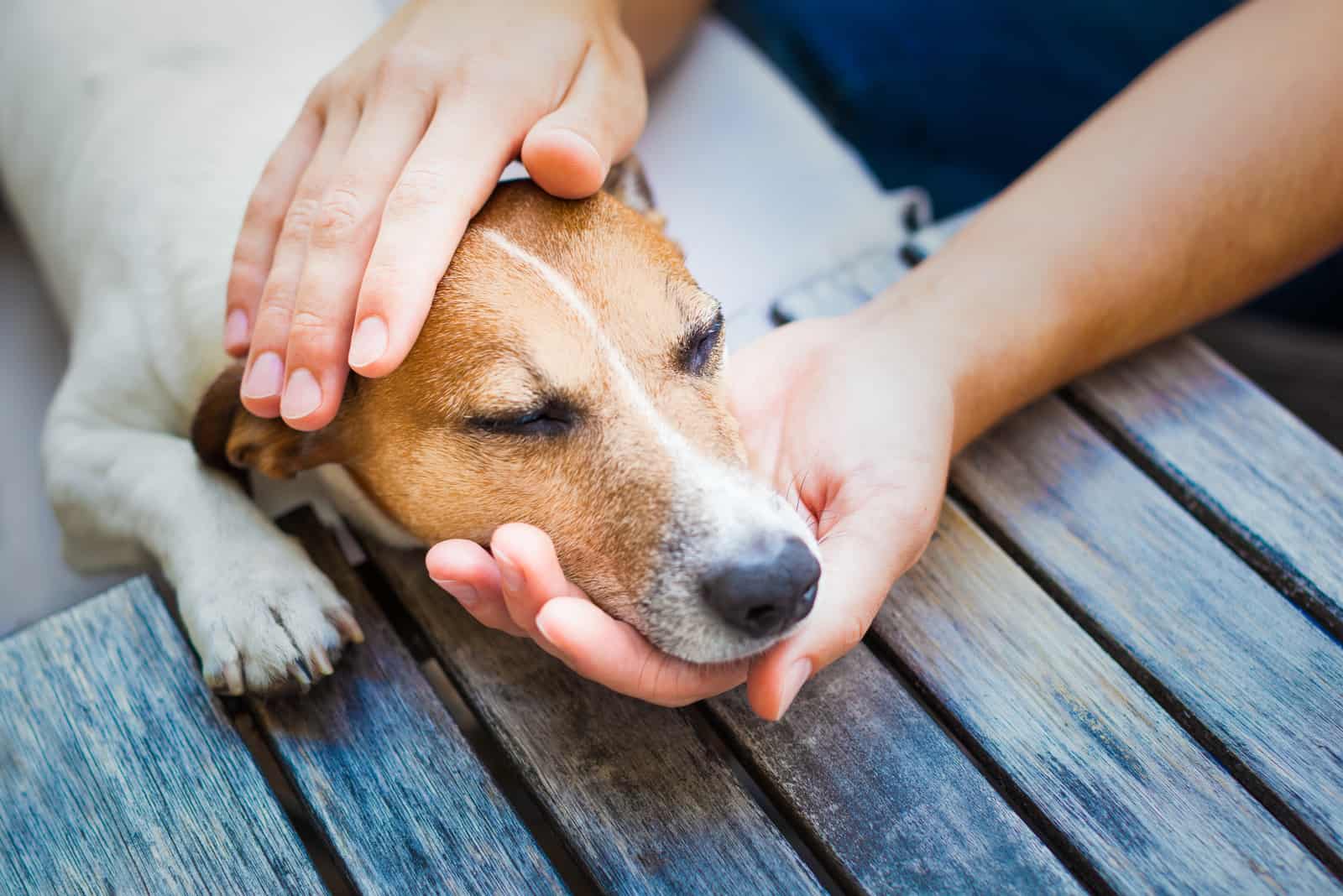
It is hard watching your dog with health problems you can do nothing about. No matter how much research you do, vaginal, rectal, and urethral prolapses can and should only be treated by veterinarians.
Still, knowing what to do and, even more importantly, what not to do can save your dog from a lot of pain and potential complications. Even though you have not been provided an answer on how to heal dog prolapse at home, you hopefully saw the gravity of getting your canine to the vet ASAP.
Spaying and neutering your dogs can drastically reduce the chances of vaginal and urethral prolapse, respectively. With that, I bid you farewell.
